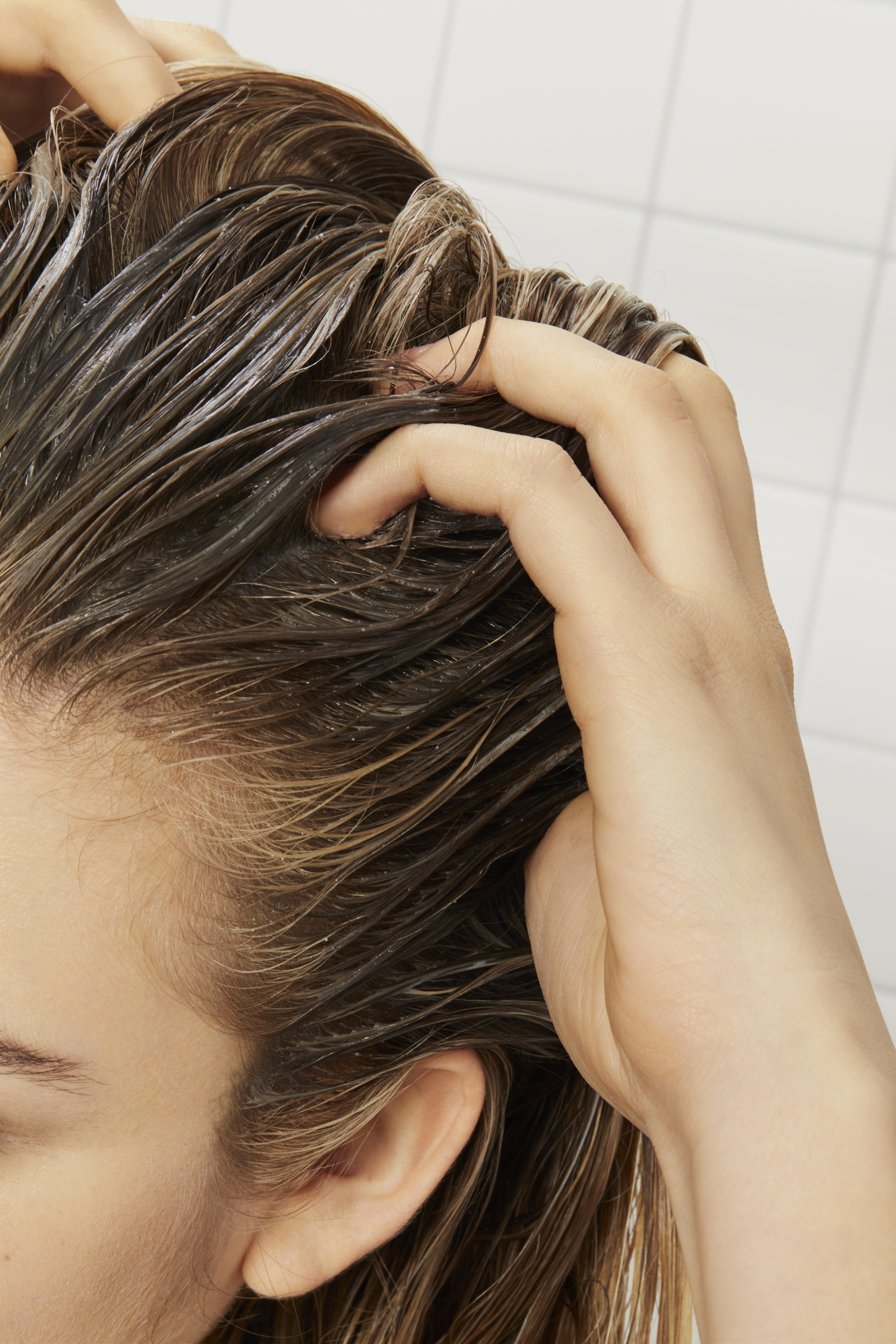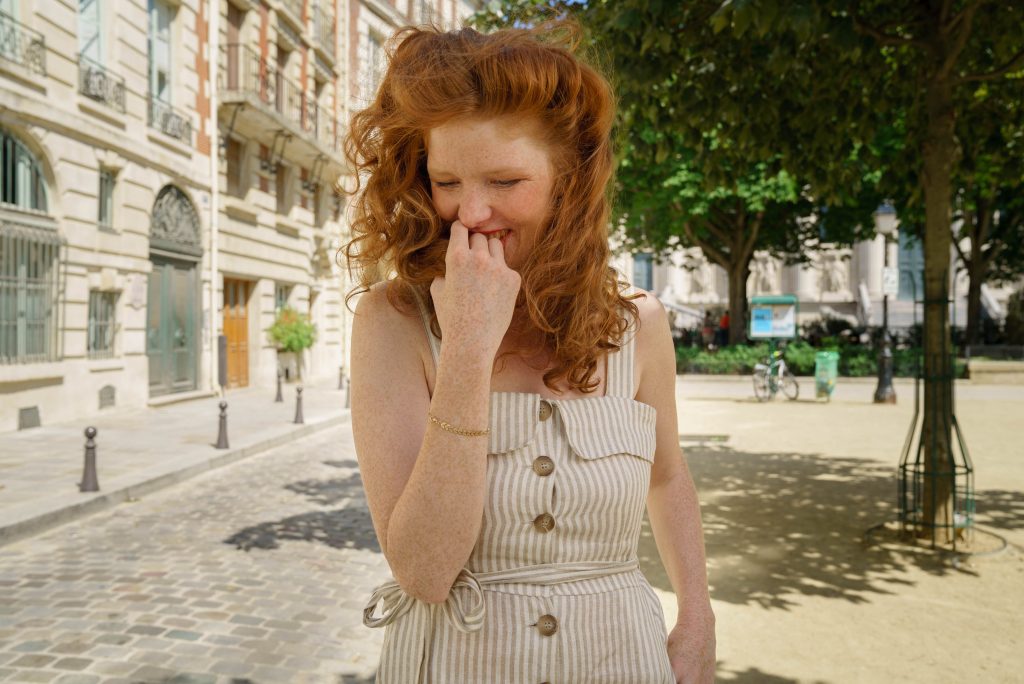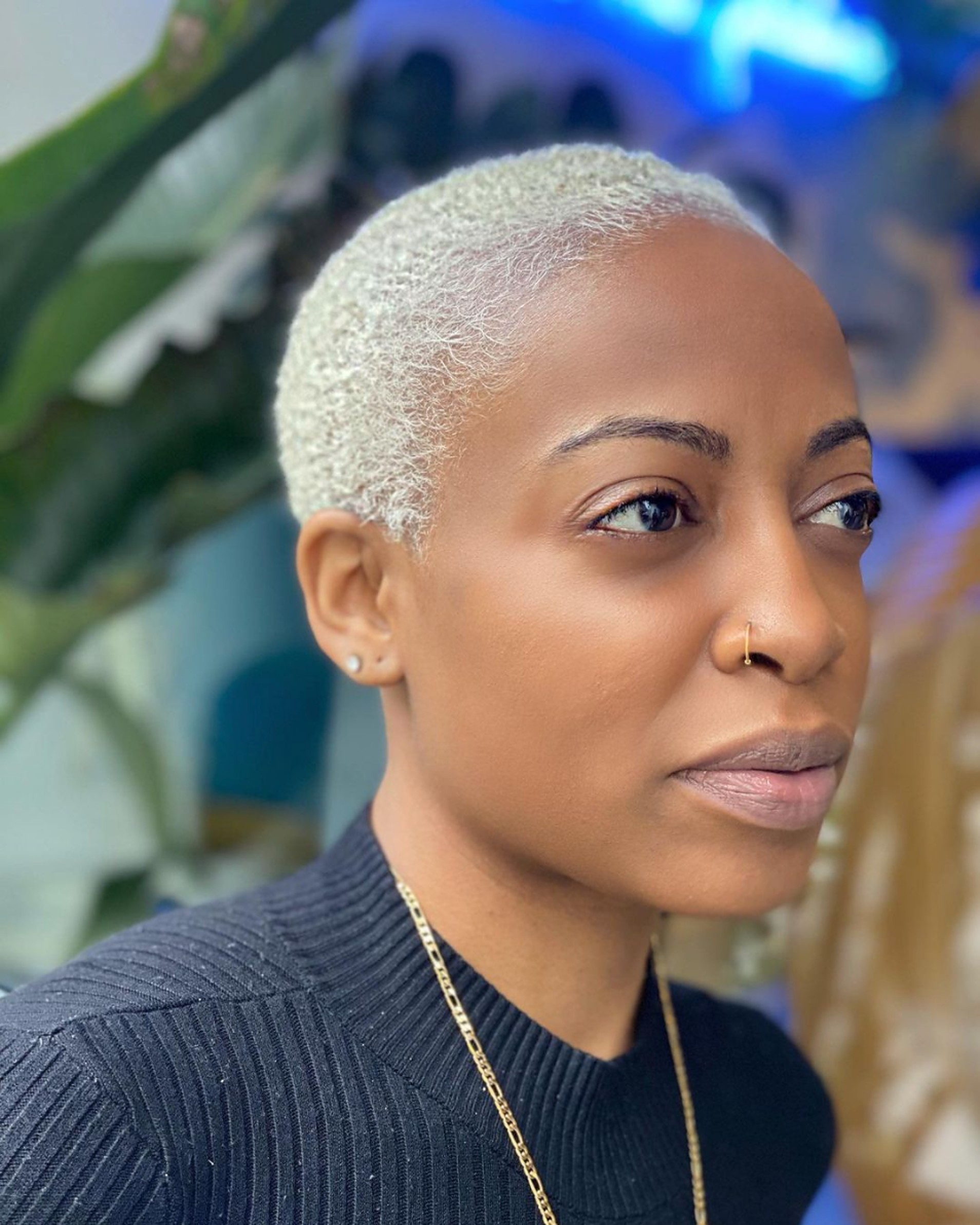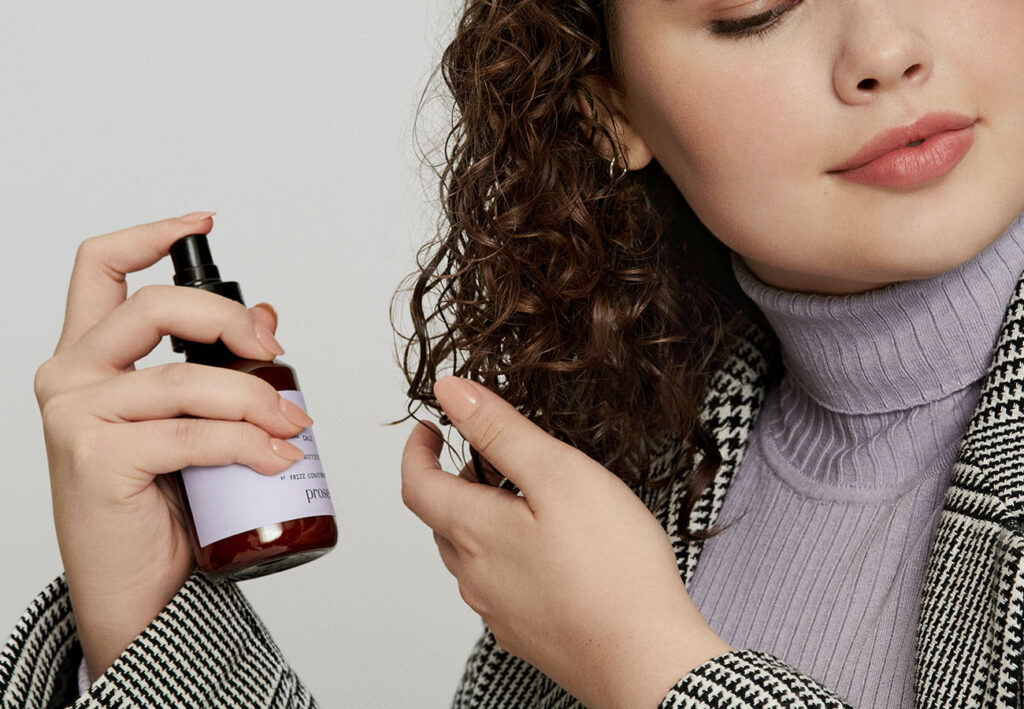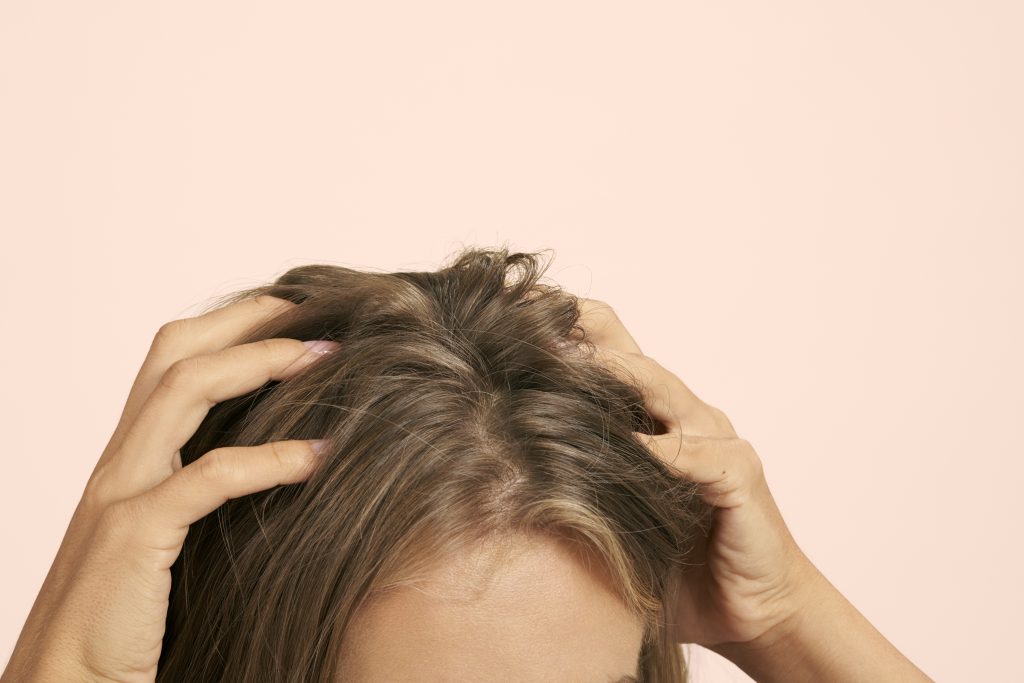Possible Cause #1 – Tight Ponytails
Everyone loves a sleek hairstyle every once in a while, but constantly wearing tightly pulled back hair can be one of the reasons your scalp hurts, so dancers and gymnasts, beware. If you like to wear high ponytails, buns, or braids, these styles can pull on your scalp and even cause damage to the follicles. Hair can break away from the roots, and this can result in splitting and hair weakness.
Something else to keep in mind is that wet updos can do even more damage. Wet hair is very fragile and is more prone to breakage. Your hair expands when it’s wet and contracts when it dries, so if your hair is tied up wet, the tension will increase as your hair gets dry.
Sleeping with your hair in a bun can also be detrimental to your hair’s health and contribute to your scalp irritation. An updo while you sleep may keep your hair out of your face, but it can also pull at your roots while you toss and turn during the night, so if you’re wearing your hair up overnight, be sure to use a soft scrunchie to minimize any risk.
Possible Cause #2 – Migraines
Scalp pain can also have underlying causes as well. People who suffer from migraines are likely to experience scalp pain. This is called allodynia, and it is from the nerve cells firing in the brain, which can increase your sensitivity to pain. This means that even if your hair does not normally hurt, during a migraine, it could really affect you.
According to the American Migraine Foundation, people suffering from migraines may even experience pain from a light tap on the shoulder or wearing a hat. This pain may feel like it’s coming from the skin, but it’s usually due to mixed up nervous system signals. And the more frequently you experience migraines, the more likely you are to have this sensitivity.
Possible Cause #3 – Overwashing or Underwashing
Hair is very finicky, and it can be difficult to know how often to wash your hair in order to keep it healthy and clean. If you are not washing your hair enough, this can contribute to your scalp hurting. Your hair won’t get enough stimulation if you are not washing or brushing it regularly. This can cause a build-up of oil and flakes in your hair, which will irritate your scalp.
On the other hand, washing your hair too much can land you in a similar situation. Washing your hair in excess can lead to your scalp overproducing oils, and hair can become dry and brittle. It is important to keep in mind that everyone’s hair is different, and there are a number of factors that can affect how often you should wash your hair. This includes your age, activity level, hair texture and hair type.
Solution #1
The first solution you can easily do is let your hair down. Even though tight hairstyles can be fun for a sleek and stylish look, you should not keep them in all day or do them every day of the week. Another simple solution to scalp pain is to keep your hair down when you sleep. As mentioned before, going to bed with a bun causes pulling on your roots. Try sleeping with your hair down or using a silk bonnet.
Only use soft cloth or satin hair ties when styling your hair to avoid breakage from grippy elastics. On days when you don’t do a tight updo, opt for something loose that will give your hair a much-needed break.
Solution #2
The best solution for migraine-induced hair pain is with medication. Of course, consult a doctor about this first if you feel like migraines are causing your scalp to hurt. If doctor-approved, it’s best to take your migraine medication early on before the allodynia presents itself to try and prevent it from happening. Telling your doctor about the migraines in relation to your hair hurting is important because it can be a risk factor for developing more frequent migraines.
It may also be helpful to talk to a headache specialist to ensure you get the best possible treatment.
Solution #3
As we mentioned before, it’s difficult to gauge how often hair should be washed. You want to keep the pH of your hair in balance by washing it the right amount. As a general rule, it is good to wash your hair every two to three days if you can. Of course, depending on a number of external factors, you may need to adjust this number.
If you have been washing your hair every day, it may take a while for your hair to adjust to a break between washes. The oil glands are likely overstimulated, which can create a greasy feeling in your scalp. But be patient. Your hair and scalp will balance itself over time.
Be careful using dry shampoo in between washes too. Bacteria can easily build up in unwashed hair and can cause product build-up on your scalp. Only use dry shampoo where it is needed, such as the roots and around the crown, and be sure to choose one that has natural, non-clogging ingredients.
In Summary
There are a number of reasons your scalp could be hurting. A lot of these problems are easily fixable and can result in instant relief. Letting your hair down and using softer hair ties are easy ways to improve your hair’s health.
Some things may require a small change in your daily routine, but if it can save your hair follicles from damage, it is totally worth it. Make sure you adjust your washing routine to what works best for your schedule and hair type.
Remember, a high ponytail is very fashionable but try to vary your looks to avoid any unwanted effects like hair loss.

